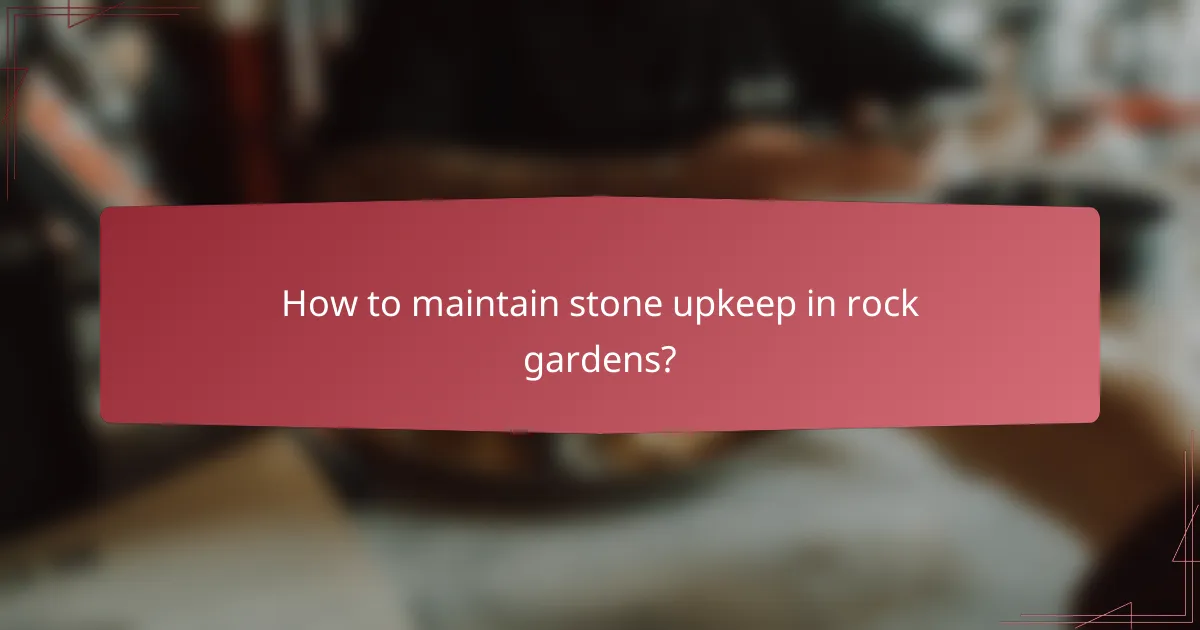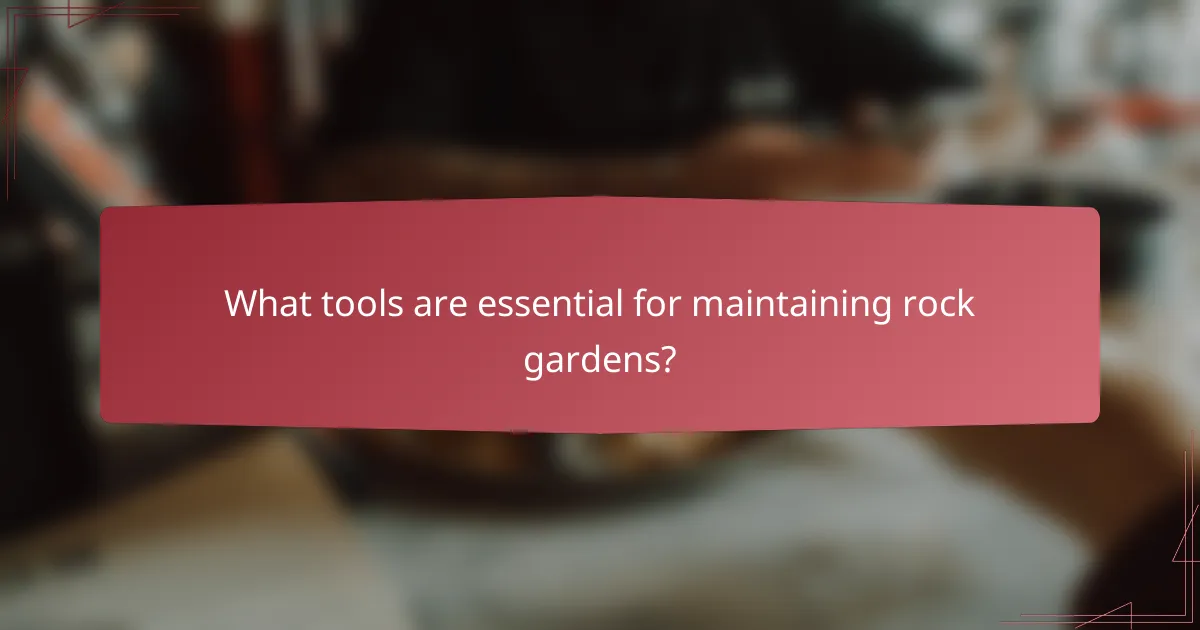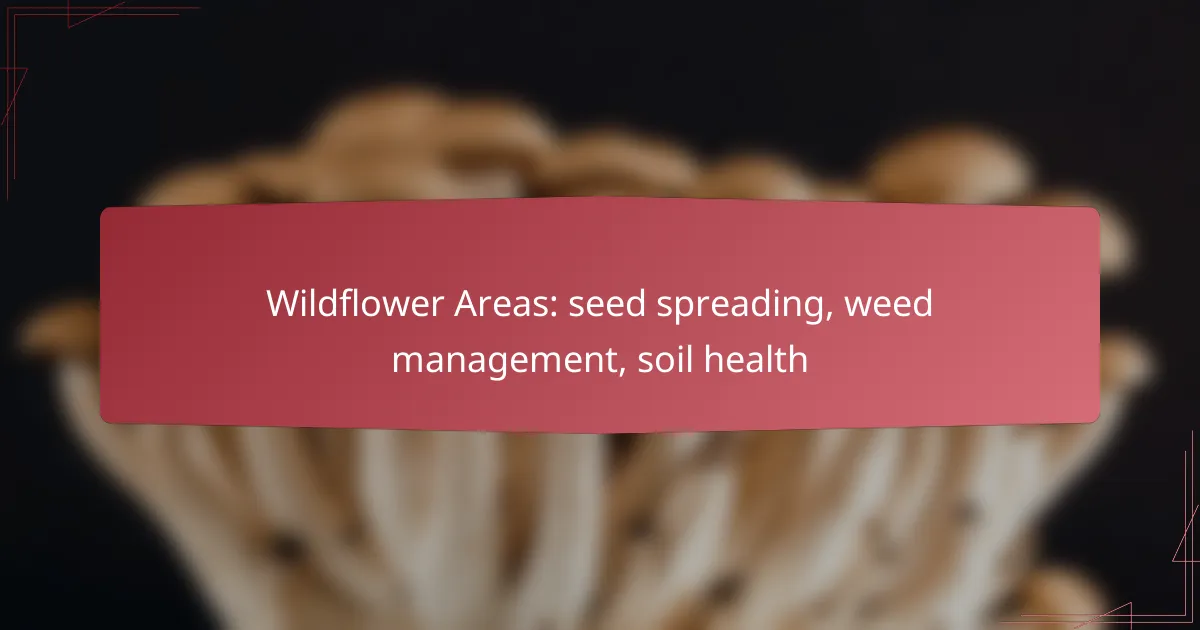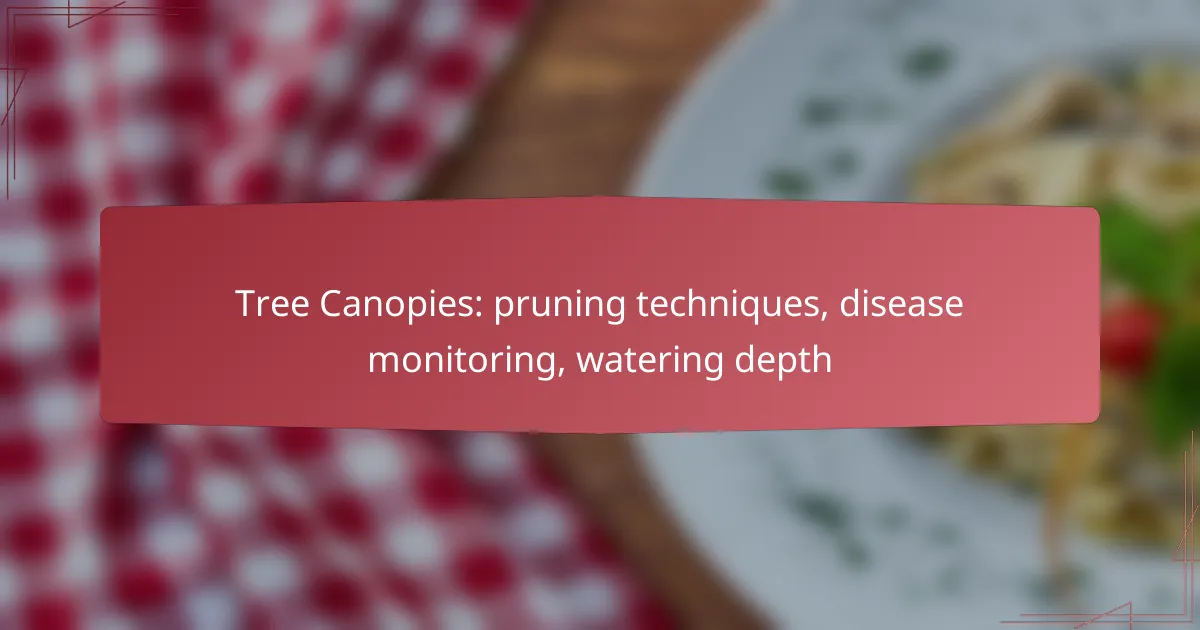Rock gardens are an excellent choice for low-maintenance landscaping, particularly in arid regions like Los Angeles, where drought-tolerant plants thrive with minimal watering. By employing effective weed control strategies and maintaining the stones, these gardens not only enhance aesthetic appeal but also require less upkeep, making them a practical and beautiful addition to any outdoor space.

How can rock gardens minimize watering in Los Angeles?
Rock gardens can significantly reduce the need for watering in Los Angeles by incorporating drought-tolerant plants and efficient irrigation methods. These gardens are designed to thrive in arid conditions, making them ideal for the region’s climate.
Use drought-resistant plants
Choosing drought-resistant plants is essential for minimizing watering in rock gardens. Native species such as succulents, cacti, and certain ornamental grasses are well-adapted to Los Angeles’ dry climate and require minimal irrigation once established.
When selecting plants, consider their water needs and growth habits. Grouping plants with similar requirements can optimize water usage and create a cohesive aesthetic. For instance, combining low-water succulents with stone features enhances both beauty and functionality.
Implement efficient irrigation systems
Efficient irrigation systems, such as drip irrigation, can help conserve water in rock gardens. These systems deliver water directly to the plant roots, minimizing evaporation and runoff. Installing a timer can further enhance efficiency by ensuring plants receive water only when needed.
Consider using smart irrigation controllers that adjust watering schedules based on weather conditions. This technology can significantly reduce water waste and keep your rock garden healthy without excessive watering.
Utilize mulch for moisture retention
Applying mulch around plants in rock gardens helps retain soil moisture and suppress weeds. Organic mulches, such as wood chips or bark, not only conserve water but also improve soil quality as they decompose over time.
For optimal results, apply a layer of mulch that is several inches thick, ensuring it does not touch the plant stems. This practice can reduce the frequency of watering and promote healthier plant growth in the long run.

What are effective weed control methods for rock gardens?
Effective weed control methods for rock gardens include using landscape fabric, natural herbicides, and regular hand removal of weeds. These strategies help maintain the aesthetic appeal of the garden while minimizing the need for chemical interventions.
Apply landscape fabric
Landscape fabric acts as a barrier that prevents weeds from growing while allowing water and nutrients to reach the soil. When installing, lay the fabric over the soil before adding rocks or gravel, ensuring it covers the entire area. Secure the edges with stakes or rocks to prevent it from shifting.
Consider using a fabric that is UV-resistant to prolong its lifespan. Regularly check for any tears or areas where weeds may emerge, and repair as needed to maintain its effectiveness.
Use natural herbicides
Natural herbicides, such as vinegar or salt solutions, can effectively control weeds without harming the environment. Apply these solutions directly onto the leaves of the weeds on a sunny day to enhance their effectiveness. Be cautious, as these substances can also affect desirable plants if they come into contact.
For best results, consider using a mixture of vinegar with dish soap, which can help the solution adhere to the leaves. Always test a small area first to gauge the impact on your specific rock garden setup.
Regularly remove weeds by hand
Hand weeding is a straightforward method to keep your rock garden free of unwanted plants. Regularly inspect your garden and pull out weeds as soon as you spot them, ideally before they flower and seed. This proactive approach can significantly reduce the weed population over time.
To make hand weeding more efficient, use a small hand tool to loosen the soil around the roots, making it easier to pull out the entire weed. Aim to weed after rainfall or watering when the soil is moist, as this will help in removing the roots more effectively.

How to maintain stone upkeep in rock gardens?
Maintaining stone upkeep in rock gardens involves regular cleaning, monitoring for erosion, and replacing any damaged stones. These practices ensure the aesthetic appeal and structural integrity of your garden while minimizing maintenance efforts.
Regularly clean stones
Cleaning stones in your rock garden helps prevent the buildup of dirt, algae, and moss, which can detract from their appearance. Use a stiff brush or a pressure washer on a low setting to remove debris without damaging the stones.
Consider cleaning your stones at least once a season, or more frequently if your garden is in a damp area. This routine will keep your stones looking fresh and vibrant.
Check for erosion and displacement
Regularly inspect your rock garden for signs of erosion or stone displacement, especially after heavy rains or storms. Erosion can lead to uneven surfaces and may require repositioning of stones to maintain stability.
Look for gaps between stones or areas where soil has washed away. Addressing these issues promptly can prevent larger problems and maintain the overall design of your garden.
Replace damaged stones
Damaged stones can disrupt the visual harmony of your rock garden and may pose safety risks. If you notice cracks, chips, or significant wear, it’s best to replace them to preserve the garden’s integrity.
When selecting replacement stones, aim for similar colors and textures to ensure a cohesive look. Keep a few spare stones on hand for quick replacements as needed.

What are the benefits of rock gardens in urban areas?
Rock gardens offer several advantages in urban environments, particularly by minimizing water usage and enhancing visual appeal. They create low-maintenance landscapes that are both functional and aesthetically pleasing, making them ideal for city living.
Reduce water consumption
Rock gardens significantly lower water consumption compared to traditional gardens. By incorporating drought-resistant plants and using stones to retain moisture, these gardens thrive with minimal irrigation, making them suitable for areas with water restrictions.
To maximize water efficiency, consider using native plants that are adapted to local climates. This approach not only conserves water but also reduces the need for chemical fertilizers and pesticides, promoting a healthier ecosystem.
Enhance property aesthetics
Rock gardens can dramatically enhance the visual appeal of urban properties. The combination of stones, gravel, and carefully selected plants creates a unique landscape that can complement modern architecture and natural surroundings.
Incorporating various textures and colors in your rock garden can create focal points and visual interest. Use larger stones for structure and smaller pebbles for pathways, ensuring a cohesive design that attracts attention without overwhelming the space.
Provide habitat for local wildlife
Rock gardens serve as valuable habitats for local wildlife, including beneficial insects, birds, and small mammals. The diverse plant life and varied rock formations create shelter and food sources, promoting biodiversity in urban settings.
To encourage wildlife, select native plants that provide nectar and seeds. Additionally, leaving some areas undisturbed can create natural habitats, allowing urban gardens to play a crucial role in supporting local ecosystems.

What tools are essential for maintaining rock gardens?
To effectively maintain rock gardens, essential tools include a garden rake, a weeding tool, and a pressure washer. These tools help manage weeds, maintain stone appearance, and ensure proper drainage, contributing to the overall health of the garden.
Garden rake
A garden rake is crucial for leveling soil and spreading mulch in rock gardens. It helps remove debris and leaves that can accumulate and hinder drainage. Opt for a lightweight rake with sturdy tines to easily maneuver around stones and plants.
When using a rake, work in sections to avoid disturbing the layout of your garden. Regular raking can prevent the buildup of organic material that attracts pests and weeds.
Weeding tool
A weeding tool, such as a hand weeder or hoe, is essential for removing unwanted plants without damaging surrounding stones or plants. These tools allow for precise removal of weeds at the root, reducing the chance of regrowth.
Consider using a weeding tool with a long handle for better leverage and to minimize strain on your back. Regular weeding, ideally every few weeks, can keep your rock garden looking tidy and healthy.
Pressure washer
A pressure washer is effective for cleaning stones and surfaces in a rock garden. It removes dirt, algae, and moss that can accumulate over time, restoring the natural beauty of the stones. Choose a pressure washer with adjustable settings to avoid damaging delicate plants.
When using a pressure washer, maintain a safe distance from plants and stones to prevent any unintended damage. Aim to clean your rock garden once or twice a year, depending on the local climate and environmental factors.

How to choose the right plants for a rock garden?
Selecting the right plants for a rock garden involves considering factors like climate, soil conditions, and the plants’ water needs. Opt for drought-resistant species that thrive in rocky, well-drained environments to minimize maintenance and ensure a vibrant display.
Consider local climate
Your local climate plays a crucial role in plant selection for a rock garden. Choose plants that are native or well-adapted to your area’s temperature ranges and precipitation patterns. For instance, in warmer regions, succulents and cacti may thrive, while cooler areas might support alpine plants.
Research the hardiness zone of your location to identify which plants will survive winter temperatures. This can help you avoid costly replacements and ensure your garden remains healthy year after year.
Evaluate soil conditions
Soil quality is essential for the success of a rock garden. Test your soil to determine its pH and drainage capabilities. Rocky, sandy soils are ideal, as they allow excess water to drain away, preventing root rot.
Consider amending your soil with organic matter or gravel to improve drainage if necessary. Additionally, avoid heavy clay soils, as they retain moisture and can hinder the growth of drought-tolerant plants.



